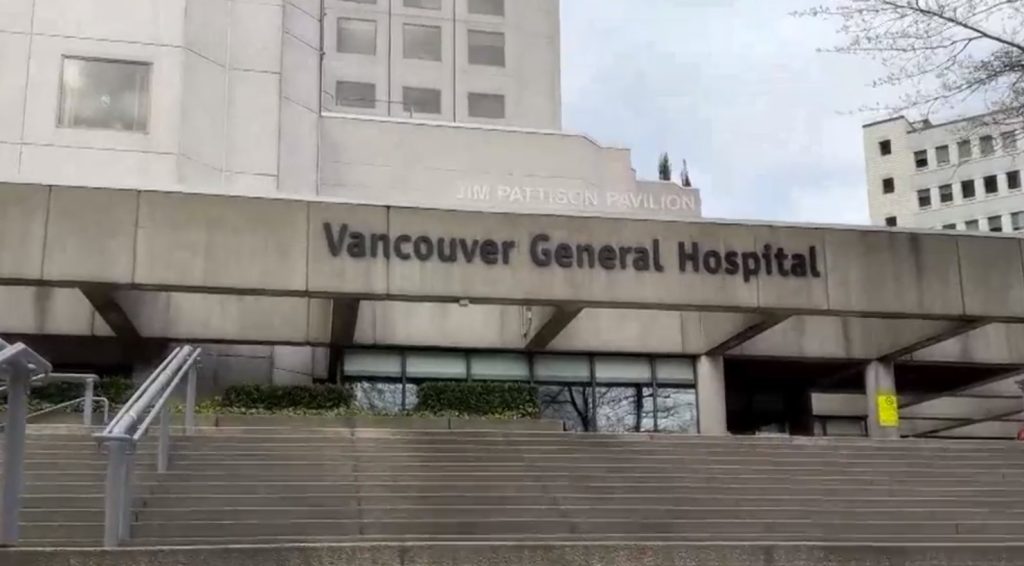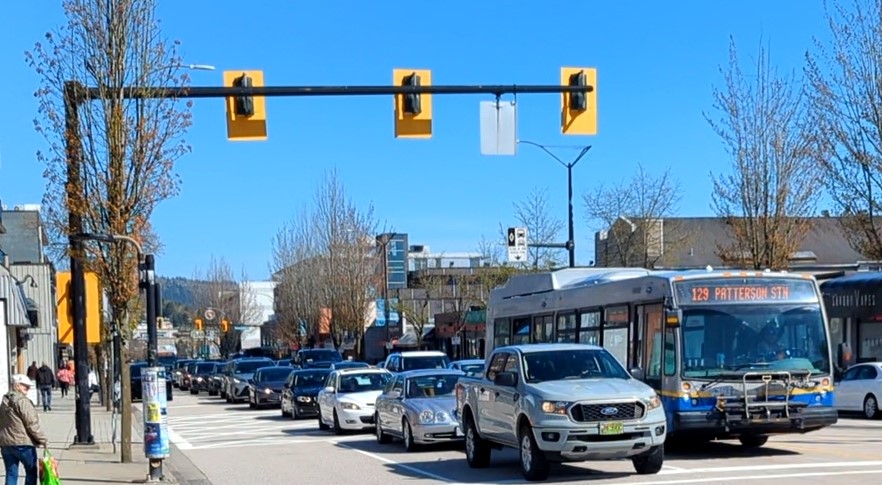Distracted driving, confusing intersection factors in fatal ambulance, train collision; TSB
Posted July 13, 2017 10:37 am.
Last Updated July 13, 2017 2:56 pm.
This article is more than 5 years old.
LANGLEY (NEWS 1130) – Distracted driving and a complicated intersection design were factors in a 2015 fatal crash involving an ambulance at a railway crossing in Langley, according to the Transportation Safety Board (TSB).
The findings are part of a TSB report wrapping up its investigation into the collision between the vehicle and a CN train at the Crush Crescent and Glover Road crossing which injured the two paramedics inside and killed their patient passenger.
The driver was on a personal cellphone at the time and apparently tried to get through the crossing arms to make a left turn as the lights and bells were activated.
“The driver, whose cellphone was active at the time, attempted to make a left hand turn but stopped on the track when a lowered crossing gate for the opposing lane of traffic appeared to be blocking forward progress,” TSB senior regional investigator Peter Hickli said.
Despite the initial belief that the ambulance could not get out from behind the crossing gates, the investigation found there was room before the train clipped the back of the vehicle.
The lights, gates and bells were working at the time of the crash, however road markers in the area were faded.
Although the cell phone distraction likely decreased the driver’s awareness, the complex design of the crossing also contributed to the accident, according to the TSB.
“With multiple lanes, two distinct rail tracks close together and many different visual cues, some of them hard to see or appearing contradictory,” Senior Human Factors Investigator Sarah Harris said. “All of these put together limited the driver’s situational awareness.”
The TSB also expressed concern about lights at the intersection which are designed to stay green briefly when a train is approaching to remove traffic from the intersection, although the signals fit within safety guidelines.
Steps taken to improve the intersection since the accident have included relocating the crossing warning system to encompass both train tracks, extending the active warning system, installing flashing lights overhead, repainting some pavement markings and a new LED sign warning of approaching trains.
Safety could be further improved by repainting all the pavement markings, according to Hickli, but it is still unclear whether the Township of Langley or the Ministry of Transportation and Infrastructure has jurisdiction.
“Better warning signs, clearer signals and improved sight lines may still be insufficient if drivers are distracted and unable to pay attention to the environment around them,” Hickli said. “This accident provides a tragic reminder of exactly that.”
BC Emergency Health Services says it is reviewing the TSB report and will take appropriate steps, but would not specify what kind of consequences the driver could face due to confidentiality concerns.
“The individual who was driving during this accident is still a (BCEH) employee, but that individual is not at this time driving ambulances,” Executive Vice President Linda Lupini said.
BCEH understands the driver was using a hands-free device at the time of the crash.
Several new policies were brought in following the collision, according to Lupini, including a new driving and employee orientation training program called Operation Lifesaver to deal with railways crossings.
BC Ambulance Service rules state employees must not use a cell phone while driving.
“We have now advised our employees that even hands-free calls are not necessarily safe,” Lupini said. “We respect and appreciate the TSB findings. We intend to implement everything we’ve been asked to implement.”










